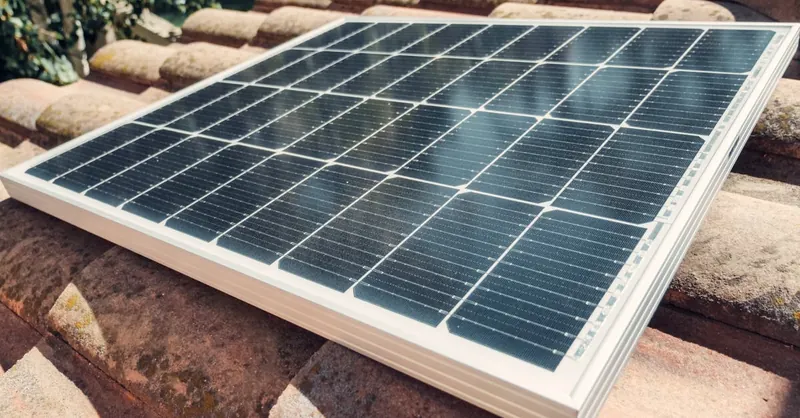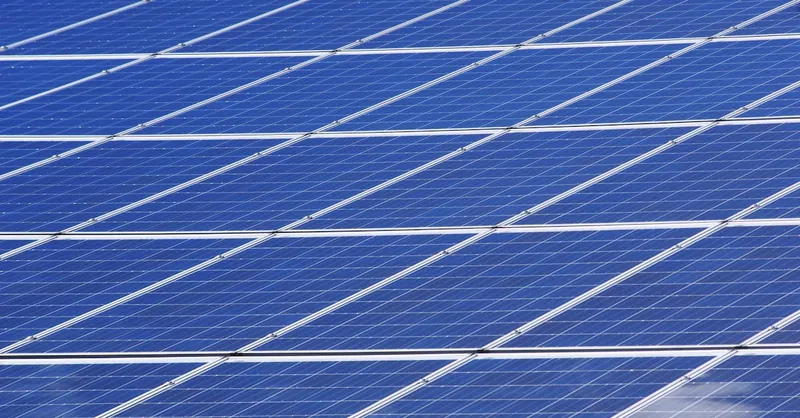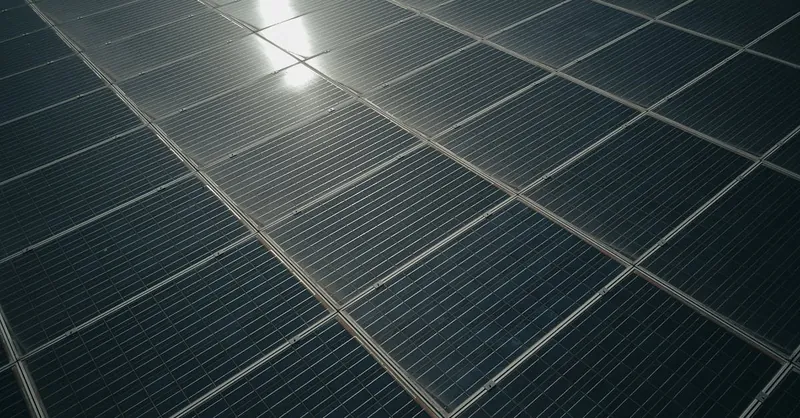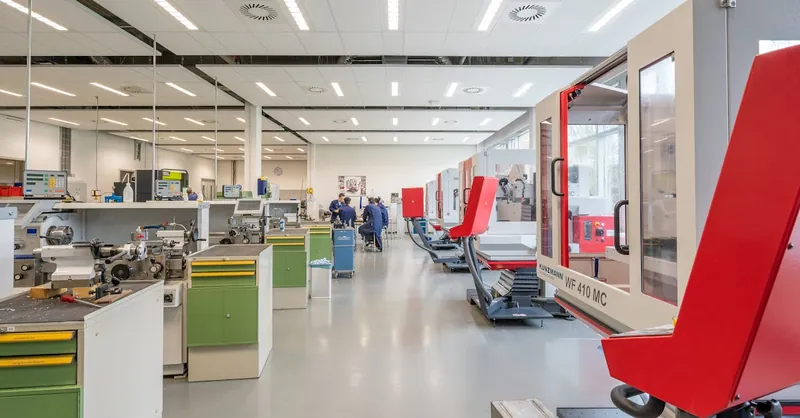Solar Power Efficiency Improvements: Science & Innovations
Category: Renewable Energy
Unlocking Solar Power Efficiency: Your Guide to Innovations
Whether you're a curious beginner fascinated by renewable energy or an electrical engineer seeking to deepen your understanding of solar technology, improving solar power efficiency is a critical challenge and opportunity in the energy sector today. You’ve likely landed here because you want to know how solar panels are evolving to capture more sunlight, convert it more effectively, and reduce losses that diminish output. Maybe you’ve hit the frustration of outdated or overly technical resources that don’t clearly explain the latest science and innovation around solar efficiency improvements. This post is crafted to guide you through the fundamentals and cutting-edge advancements—from material science breakthroughs, novel cell architectures, to smart system integration—that are transforming how we harness solar energy. We'll break down complex concepts without diluting important details, offering both practical insights and technical depth. By the end, you’ll have a well-rounded view of the key technologies boosting solar efficiency and how they fit into the broader renewable energy landscape. Ready to discover how science and innovation are propelling solar power into a more efficient, sustainable future? Let’s dive in.
- Unlocking Solar Power Efficiency: Your Guide to Innovations
- Fundamentals of Solar Power Efficiency
- Advances in Photovoltaic Materials
- Innovations in Solar Cell Architecture
- Solar Panel Manufacturing Improvements
- Tracking and Concentration Technologies
- Energy Conversion and System-Level Efficiency
- Thermal Management and Durability Enhancements
- Emerging Trends and Research Frontiers in Solar Power Efficiency
Fundamentals of Solar Power Efficiency
Understanding solar power efficiency starts with grasping the basic definitions and metrics that quantify how well photovoltaic (PV) systems convert sunlight into usable electricity. At its core, solar efficiency is the ratio of the electrical power output of a solar panel to the solar power input it receives from sunlight, typically expressed as a percentage. This metric captures how effectively a PV module transforms the sun’s energy and is critical because even small improvements can lead to significant gains in energy production and cost savings over the lifespan of a system.
Key Definitions and Metrics
-
Conversion Efficiency:
The primary measure of a solar cell’s performance, this defines the percentage of solar energy converted to electrical energy under standard test conditions (usually 1000 W/m², 25°C, and AM1.5 solar spectrum). Higher conversion efficiency means more electricity generated per unit area, which is essential for maximizing output from limited space. -
Fill Factor (FF):
Fill factor is the ratio of the maximum obtainable power to the product of the open-circuit voltage and short-circuit current. It influences efficiency by reflecting the internal electrical quality of the solar cell. A higher FF implies less electrical loss during power conversion. -
Open-Circuit Voltage (Voc) and Short-Circuit Current (Isc):
Voc is the maximum voltage when no current flows, and Isc is the current when the voltage is zero. These parameters relate to the materials and structure of the cell and fundamentally impact the achievable power and efficiency. -
Module Efficiency vs. Cell Efficiency:
While cell efficiency describes an individual silicon or alternative material cell, module efficiency accounts for all layers—glass, encapsulation, wiring—and manufacturing tolerances. It is always slightly lower than cell efficiency but critical for real-world applications.
Why Efficiency Matters in Photovoltaic Systems
Improving solar efficiency is not just a numbers game—it directly affects the economic and environmental viability of solar power. Higher efficiency panels deliver:
- More power output per square meter, enabling installation in space-constrained environments like rooftops or urban settings.
- Lower balance-of-system costs, since fewer panels and less supporting infrastructure (mounting, wiring, converters) are needed for a fixed energy target.
- Reduced levelized cost of electricity (LCOE), making solar power more competitive with conventional fossil fuels and other renewables.
- Enhanced performance in suboptimal conditions, such as diffuse light or partial shading, by improving overall energy capture and conversion.
By mastering these fundamentals—definitions, metrics, and the crucial role efficiency plays—you create a strong foundation to appreciate the more advanced technologies and breakthroughs driving the next generation of solar panels. Whether your goal is to optimize solar designs or simply understand how innovation translates into better energy solutions, these basics ground your knowledge in solid science and practical relevance.

Image courtesy of Kindel Media
Advances in Photovoltaic Materials
The quest for higher solar power efficiency has driven remarkable progress in photovoltaic materials beyond traditional silicon solar cells. While silicon still dominates the market, emerging materials like perovskites, multi-junction cells, and thin-film technologies are rapidly gaining attention for their potential to surpass conventional efficiency limits and reduce production costs. These innovations leverage novel material properties and layered architectures to enhance light absorption, minimize energy loss, and improve overall solar conversion performance.
Perovskite Solar Cells: A Game-Changer in Efficiency and Cost
Perovskite materials, a class of crystalline structures typically based on hybrid organic-inorganic lead halides, have revolutionized solar research due to their exceptional light-harvesting capabilities and ease of fabrication. Key advantages include:
- High absorption coefficients, enabling thin, lightweight active layers that capture more sunlight per thickness unit.
- Tunable bandgaps, allowing optimization of the spectral response to better match the solar spectrum.
- Rapid advancements have pushed perovskite solar cell efficiencies from under 4% in early prototypes to over 25% in just a decade, rivaling traditional silicon cells.
- Potential for low-cost, scalable manufacturing through solution-based processing techniques like spin coating and printing.
Challenges remain such as improving long-term stability and reducing the use of toxic materials, but ongoing innovation is making perovskites a promising contender for next-generation, high-efficiency solar panels.
Multi-Junction Solar Cells: Capturing a Broader Spectrum of Sunlight
Multi-junction or tandem solar cells stack multiple semiconductor layers, each designed to absorb a different part of the solar spectrum. This strategy significantly boosts efficiency by minimizing thermalization losses (energy lost when sunlight photons have more energy than needed to excite electrons) found in single-junction cells. Important features include:
- Layered architectures combining materials like silicon, gallium arsenide (GaAs), or perovskites tailored to their specific absorption ranges.
- Efficiencies exceeding 40% under concentrated sunlight have been demonstrated in laboratory conditions, a remarkable leap compared to the 20–22% average for commercial silicon panels.
- These cells are especially suited for applications where maximum power density is critical, such as space satellites and concentrated photovoltaic (CPV) systems.
Ongoing efforts aim to reduce fabrication costs and adapt multi-junction technology for widespread terrestrial use, potentially transforming the solar industry with ultra-high-efficiency modules.
Thin-Film Technologies: Lightweight and Flexible Solar Solutions
Thin-film photovoltaics utilize ultra-thin layers of semiconductor materials deposited on flexible substrates, offering advantages like:
- Reduced material usage and manufacturing costs relative to bulk silicon wafers.
- Mechanical flexibility, enabling new applications on curved surfaces and portable devices.
- Common thin-film materials include cadmium telluride (CdTe), copper indium gallium selenide (CIGS), and emerging options like organic photovoltaics (OPV).
- Modern thin-film panels consistently achieve efficiencies around 15–22%, with some laboratory prototypes approaching 25%.
While efficiency lags slightly behind crystalline silicon, ongoing research is focused on improving stability, scalability, and environmental impact, securing thin films as a complementary solar technology, particularly where weight and shape flexibility are priorities.
By harnessing these advanced photovoltaic materials, solar technology is rapidly evolving from the limitations of single-junction silicon cells to a broader suite of high-performance, cost-effective solutions. These breakthroughs not only drive higher solar power efficiency but also open pathways to diverse applications, accelerating the global transition to clean, sustainable energy.

Image courtesy of Pixabay
Innovations in Solar Cell Architecture
Improving solar power efficiency goes beyond new materials—it also involves innovative solar cell architectures that maximize light capture and optimize the conversion process. Recent breakthroughs in design strategies focus on reducing energy losses, enhancing photon absorption, and increasing electrical output through smarter engineering.
Passivation Techniques: Minimizing Energy Losses
Surface passivation plays a vital role in boosting solar efficiency by reducing recombination losses—where excited electrons and holes recombine without generating current. Passivation layers, typically ultra-thin films of materials like silicon dioxide (SiO₂) or silicon nitride (Si₃N₄), create a protective barrier on the cell surface that:
- Reduces defect sites where recombination occurs.
- Improves the electrical quality of the semiconductor interface.
- Enhances open-circuit voltage (Voc) and overall cell efficiency.
Recent innovations include advanced passivation with atomic layer deposition (ALD) and organic passivation layers, which further optimize the interface between different semiconductor materials in tandem cells.
Bifacial Solar Cells: Capturing Light from Both Sides
Traditional solar panels absorb sunlight primarily on their front side, but bifacial solar cells are designed to capture indirect and reflected light from the rear surface. This innovation increases total energy yield by:
- Using transparent backing materials such as glass instead of opaque back sheets.
- Allowing reflected sunlight from ground surfaces or nearby structures to contribute additional power.
- Boosting energy production by 5–15% depending on installation conditions and albedo (reflectivity) of the environment.
Bifacial technology integrates well with mounting systems optimized for maximizing rear illumination, making it a practical upgrade for commercial and utility-scale solar farms aiming for higher efficiency without drastically increasing footprint.
Tandem Cells: Stacking Layers for Superior Conversion
One of the most promising architectural advancements is the development of tandem solar cells, which layer two or more photovoltaic materials with complementary bandgaps. This design allows each sub-cell to absorb a different portion of the solar spectrum, thereby:
- Reducing thermalization losses by utilizing high-energy photons in the top cell and lower-energy photons in the bottom cell more efficiently.
- Achieving theoretical efficiencies above 40%, surpassing the Shockley–Queisser limit for single-junction cells.
- Combining materials such as perovskites atop silicon cells, or multi-junction III-V semiconductors, to synergistically enhance performance.
These architectures are rapidly transitioning from laboratory research to pilot-scale commercial production, signaling a new era in high-efficiency solar technology.
Other Design Improvements Enhancing Efficiency
Beyond passivation, bifacial, and tandem architectures, several other design strategies contribute to optimizing solar cell performance, including:
- Textured surfaces and anti-reflective coatings that maximize light trapping and minimize reflection losses.
- Interdigitated back contact (IBC) cells, which relocate all electrical contacts to the rear of the cell, reducing shading on the front side and increasing active area.
- Advanced electrode materials and layouts that improve charge collection and reduce resistive losses.
Each of these engineering innovations complements material science breakthroughs, culminating in more efficient, durable, and cost-effective solar panels that redefine solar power’s potential for clean energy generation.

Image courtesy of Kindel Media
Solar Panel Manufacturing Improvements
Advancements in solar panel manufacturing processes are crucial to enhancing overall efficiency while reducing production costs and defects. Modern manufacturing techniques focus on achieving higher uniformity in cell quality, minimizing micro-defects that degrade performance, and streamlining production workflows to make solar technology more accessible and affordable. These improvements not only boost the reliability and durability of panels but also contribute significantly to lowering the levelized cost of electricity (LCOE).
Reducing Defects Through Precision Manufacturing
A key challenge in solar panel production lies in mitigating defects such as cracks, impurities, or inconsistencies in silicon wafers and thin-film layers that can drastically reduce efficiency. Innovations addressing this include:
- Advanced wafer slicing and texturing: High-precision diamond wire saws reduce micro-cracks and yield thinner wafers without compromising structural integrity. Surface texturing at the micro- and nano-scale improves light trapping and reduces reflection losses.
- Inline quality control systems: Real-time defect detection using machine vision, electroluminescence imaging, and automated optical inspection enables early identification and correction of flaws, significantly increasing yield rates.
- Improved doping and passivation techniques: Controlled doping uniformity and enhanced passivation layers across entire wafers ensure consistent electronic properties, reducing recombination sites and boosting fill factor and open-circuit voltage.
Enhancing Uniformity for Better Performance
Uniformity in material properties and cell interconnection leads to more predictable, efficient panel output. Manufacturers implement:
- Automated deposition and coating processes that apply semiconductor, anti-reflective, and encapsulation layers with nanoscale precision, reducing variability.
- Robotic cell stringing and lamination to maintain consistent pressure and alignment, critical for optimizing electrical contact and mechanical stability.
- Use of statistical process control (SPC) and big data analytics to optimize production parameters, minimize variability, and improve repeatability at scale.
Cost Reduction with Scalable, Sustainable Techniques
Reducing the cost of solar panels without sacrificing quality is essential for widespread adoption. Emerging manufacturing innovations focus on:
- Thin-film and hybrid cell assembly techniques that use less raw material and lower temperature processes, reducing energy input and material waste.
- Implementation of roll-to-roll printing and solution-based deposition for materials like perovskites, enabling faster, lower-cost mass production compared to traditional vacuum-based methods.
- Adoption of environmentally friendly, lead-free materials and recycling protocols to minimize environmental impact and comply with stricter regulations.
- Integration of digital twins and AI-driven predictive maintenance to optimize factory operations, reduce downtime, and lower operational costs.
By pushing the boundaries of manufacturing precision, uniformity, and scalability, these techniques are instrumental in producing higher-quality, more efficient solar panels at competitive prices. This not only advances solar energy technology but also accelerates its deployment worldwide, making renewable solar power a more viable and sustainable energy solution for the future.

Image courtesy of Mike van Schoonderwalt
Tracking and Concentration Technologies
Maximizing solar power efficiency not only depends on improving cell materials and architectures but also on enhancing how solar panels capture sunlight throughout the day. Tracking and concentration technologies are pivotal innovations that significantly increase the amount of incident solar radiation captured by photovoltaic systems by optimizing their orientation and focus relative to the sun’s position. These solutions elevate solar energy harvest beyond the static, fixed-tilt panel setups, thereby boosting overall system output and efficiency.
Solar Trackers: Dynamic Orientation for Maximum Sunlight Capture
Solar trackers are mechanical systems that adjust the position of solar panels in real-time to follow the sun’s trajectory across the sky. By maintaining an optimal angle of incidence, trackers maximize direct sunlight exposure, leading to substantial efficiency gains compared to fixed mounting. Key benefits include:
- Increased Energy Yield: Single-axis trackers can boost energy production by approximately 15–25%, while dual-axis trackers that adjust both azimuth and elevation angles can increase yield by up to 35%.
- Improved Performance in Low-Light Conditions: Trackers help capture more diffuse and morning/evening light by reducing shading and maintaining panel tilt relative to the sun.
- Compatibility with Diverse PV Technologies: Modern trackers integrate seamlessly with crystalline silicon, thin-film, bifacial, and multi-junction panels, enhancing their effectiveness across applications.
While trackers add mechanical complexity and upfront costs, their ability to increase kilowatt-hours per installed watt often justifies their use in large-scale and commercial solar installations where maximizing output is critical.
Solar Concentrators: Focusing Sunlight for Higher Efficiency
Concentrated photovoltaics (CPV) use optical devices such as lenses or mirrors to focus a large area of sunlight onto a much smaller, highly efficient solar cell. By increasing the light intensity, concentrators enable cells to operate at higher power densities, often exceeding the efficiency of typical flat panels. Important aspects include:
- Types of Concentrators: Fresnel lenses, parabolic mirrors, and dish concentrators are commonly employed to redirect and focus direct solar irradiance.
- Efficiency Gains: CPV systems with multi-junction cells have demonstrated efficiencies above 40% under high concentration ratios. Concentrators reduce the area and material needed for high-performance cells, lowering overall costs.
- Cooling Requirements: Concentrated sunlight increases cell temperature, so advanced thermal management systems are essential to maintain optimal performance and prevent degradation.
- Suitability for High Direct Normal Irradiance (DNI) Regions: CPV technologies excel in sunny, clear-sky environments where direct sunlight is abundant, such as deserts.
By combining trackers with concentrators, solar plants can dynamically focus and align high-intensity sunlight onto cutting-edge cells, achieving extraordinary efficiency levels unattainable by conventional flat-panel designs.
Together, solar tracking and concentration technologies represent transformational advances in solar power efficiency. They optimize the capture of sunlight throughout the day and intensify the photon flux on photovoltaic materials, enabling higher electricity generation per unit area. For electrical engineers and renewable energy enthusiasts alike, understanding these dynamic systems is essential for designing next-generation solar installations that maximize energy output and economic returns.
Image courtesy of Kelly
Energy Conversion and System-Level Efficiency
While advancements in materials and cell architecture drive intrinsic solar panel efficiency, system-level efficiency—the overall performance of the entire photovoltaic system—plays a crucial role in maximizing the usable electricity delivered to the grid or end users. Two key innovations impacting system efficiency are inverter advancements and maximum power point tracking (MPPT) technologies, alongside strategic system integration approaches that minimize energy losses across components.
Inverter Advancements: Enhancing DC-to-AC Conversion Efficiency
Solar panels generate direct current (DC) electricity, but most electrical grids and household appliances operate on alternating current (AC). The inverter converts DC into AC, and its efficiency directly affects the final energy output. Modern inverter technologies have achieved substantial improvements by:
- Incorporating high-efficiency power electronics such as silicon carbide (SiC) and gallium nitride (GaN) semiconductors, which reduce switching losses and improve thermal performance.
- Implementing smart grid compatibility, enabling optimized generation profiles, reactive power support, and communication with utility systems to enhance stability and overall energy utilization.
- Utilizing multi-level and transformerless designs that minimize energy losses during conversion, achieving efficiencies above 98%, significantly reducing the gap between panel output and delivered AC power.
Maximum Power Point Tracking (MPPT): Optimizing Energy Harvest
Solar panels have a characteristic voltage-current curve with a unique maximum power point (MPP) where the output power is maximized. MPPT controllers continuously adjust electrical operating conditions to extract maximum power under varying sunlight, temperature, and shading conditions. Key features include:
- Real-time dynamic tracking algorithms capable of rapidly adapting to changing irradiance and temperature.
- Module-level MPPT systems (microinverters or DC optimizers) that mitigate mismatch losses between panels caused by shading, soiling, or panel aging, increasing system robustness.
- Enhanced MPPT strategies integrated with machine learning and predictive analytics to anticipate environmental changes and optimize power extraction proactively.
System Integration Strategies to Minimize Energy Losses
Optimizing system-level performance requires careful integration of all components—from panels and inverters to wiring and mounting structures—to reduce energy losses such as:
- Minimizing resistive losses through use of low-resistance wiring, thicker cables, and optimized electrical layouts.
- Thermal management, since elevated operating temperatures in panels, inverters, or connectors degrade performance. Innovations in cooling techniques and heat-resistant materials preserve efficiency.
- Employing smart monitoring and control systems that detect faults, imbalances, or degradation early, enabling corrective actions to maintain optimal operation.
- Designing layouts and electrical configurations that avoid partial shading impacts and maximize sunlight exposure, including strategic placement and use of bypass diodes.
By combining cutting-edge inverter efficiency, advanced MPPT technology, and holistic system integration, solar power installations maximize energy conversion not only at the cell level but throughout the entire electrical pathway. This comprehensive optimization is essential for unlocking the full potential of photovoltaic technology, ensuring that the abundant solar resource is harnessed with minimal losses and maximum reliability in real-world conditions.
Image courtesy of Pixabay
Thermal Management and Durability Enhancements
Effective thermal management is essential for maintaining high solar power efficiency and extending the operational lifespan of photovoltaic panels. Excess heat buildup in solar cells can significantly reduce their electrical output and accelerate material degradation, leading to a decline in performance over time. To combat this, innovative cooling techniques and durable materials are being integrated into solar panel design, ensuring consistent performance even under intense sunlight and elevated temperatures.
Advanced Cooling Techniques to Prevent Overheating
-
Passive Cooling Methods:
These include strategic panel placement and design features such as ventilated mounting racks or heat-dissipating backsheets that promote natural airflow around solar panels. Passive cooling is a low-cost, maintenance-free approach that reduces cell operating temperature by several degrees, improving efficiency without additional energy input. -
Active Cooling Systems:
For concentrated photovoltaic (CPV) and high-efficiency modules, active cooling solutions like water spray, liquid coolant channels, or heat pipes are employed to extract excess heat rapidly. These systems maintain optimal thermal conditions, enabling solar cells to sustain maximum power output and protect sensitive materials from thermal stress. -
Thermal Interface Materials (TIMs):
The use of advanced TIMs with high thermal conductivity in module assembly improves heat transfer from cells to heat sinks or cooling surfaces. By minimizing thermal resistance within the panel stack, TIMs contribute to lowering operational temperatures and enhancing reliability.
Durable Materials to Ensure Long-Term Performance
-
UV-Resistant Encapsulants and Backsheets: Modern encapsulants protect photovoltaic cells from ultraviolet radiation, moisture ingress, and mechanical stress, which are key factors in module degradation. Durable backsheets with hydrophobic and UV-stabilizing properties prevent delamination and prolong panel life.
-
Enhanced Corrosion-Resistant Components: Using corrosion-resistant metals and coatings in cell interconnections and panel frames combats oxidative damage, particularly in harsh environmental conditions such as coastal or industrial areas.
-
Robust Laminates and Glass Layers: Toughened, anti-reflective glass and multilayer laminates increase resistance to mechanical impacts, strong winds, and thermal cycling, thereby preserving cell integrity and consistent electrical output.
By integrating cutting-edge thermal management and durability enhancements, solar panels optimize their operational temperature profile, minimizing efficiency losses and extending functional lifetime. These improvements are critical for maximizing return on investment and ensuring sustainable solar energy production across diverse climates and deployment scenarios.

Image courtesy of Kindel Media
Emerging Trends and Research Frontiers in Solar Power Efficiency
As solar technology continues to evolve, emerging trends and research frontiers are paving the way for the next generation of efficiency breakthroughs. Among the most promising advancements are quantum dots, nanostructured surfaces, and artificial intelligence (AI)-driven optimization—innovations that are redefining the fundamental limits of solar power conversion and system performance.
Quantum Dots: Tailoring Light Absorption at the Nanoscale
Quantum dots (QDs) are semiconductor nanocrystals with unique optical and electronic properties arising from quantum confinement effects. Their size-dependent bandgap tunability allows precise control of light absorption across the solar spectrum, enabling:
- Broad-spectrum harvesting: QDs can be engineered to absorb and emit light from ultraviolet to near-infrared wavelengths, capturing photons that traditional solar cells often miss.
- Multiple exciton generation (MEG): This phenomenon enables a single high-energy photon to generate multiple electron-hole pairs, potentially increasing current output and surpassing classical efficiency limits.
- Solution-processable fabrication: The ability to deposit QD-based layers via printing or coating methods supports low-cost, scalable manufacturing, ideal for flexible and tandem solar cells.
Integrating quantum dots into perovskite or silicon solar cells is an active area of research, aiming to boost efficiency while maintaining stability and manufacturability.
Nanostructured Surfaces: Enhancing Light Trapping and Charge Collection
Leveraging nanostructured surfaces on solar cells improves photon management and electrical properties by manipulating light-matter interactions at the nanoscale. Key innovations include:
- Plasmonic nanostructures, which concentrate and scatter incoming light to increase absorption without increasing material thickness.
- Photonic crystals and metasurfaces that enable anti-reflective behavior and wavelength-selective light trapping, minimizing reflection losses.
- Nanotextures and nanoimprint lithography to create highly controlled surface morphologies that facilitate efficient charge separation and transport.
These nanoscale design strategies reduce recombination losses and boost overall cell efficiency by optimizing the balance between light absorption and carrier extraction.
AI-Driven Optimization: Revolutionizing Solar System Design and Performance
Artificial intelligence (AI) and machine learning (ML) are increasingly applied to solar technology to automate and enhance efficiency at multiple scales:
- Material discovery and cell design: AI algorithms accelerate the identification of optimal semiconductor compositions and architectures by analyzing vast experimental and simulation data.
- Real-time performance monitoring: Machine learning models predict degradation patterns and identify faults, enabling proactive maintenance and maximizing energy yield.
- Dynamic system optimization: AI-powered controllers adjust tracking angles, MPPT settings, and cooling systems in response to weather and load fluctuations, pushing system-level efficiency beyond traditional limits.
- Manufacturing process control: Data-driven analytics optimize fabrication parameters, ensuring uniformity and reducing defects that impact panel efficiency.
By integrating AI with modern solar technologies, researchers and engineers can unlock new efficiency improvements, reduce costs, and accelerate deployment of more resilient and high-performing photovoltaic systems.
These cutting-edge innovations in quantum dot technology, nanostructured design, and AI-enabled optimization are set to transform solar power efficiency in the coming years. As they move from laboratory research to commercial application, these trends will play a critical role in overcoming existing efficiency bottlenecks, reducing costs, and expanding the versatility of solar energy across diverse environments and use cases. Electrical engineers and renewable energy enthusiasts should watch these frontiers closely, as they symbolize the future trajectory of solar energy innovation.

Image courtesy of Stefan de Vries
